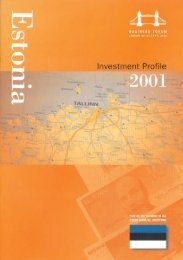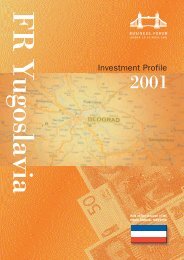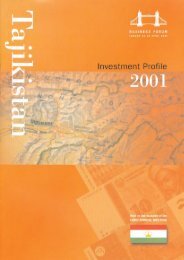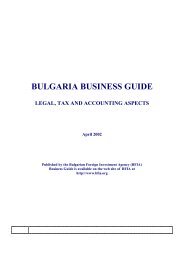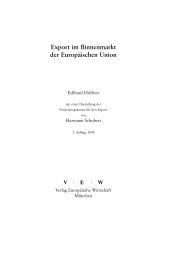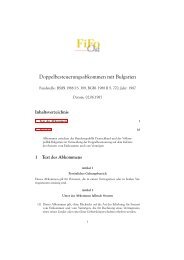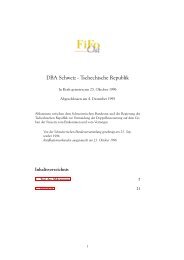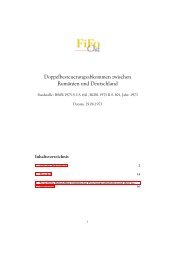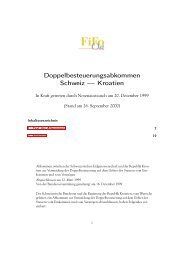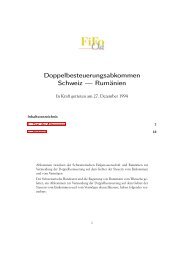EBRD activities in Ukraine - FiFo Ost
EBRD activities in Ukraine - FiFo Ost
EBRD activities in Ukraine - FiFo Ost
Create successful ePaper yourself
Turn your PDF publications into a flip-book with our unique Google optimized e-Paper software.
Major sectors of the economy<br />
Poland<br />
Belarus<br />
Moldova<br />
Romania<br />
Ukra<strong>in</strong>e<br />
Russian<br />
Federation<br />
Most sectors of the economy recorded growth <strong>in</strong> 2000. In the service sector, mobile telecommunication was the star performer<br />
with about 300 per cent growth. S<strong>in</strong>ce the f<strong>in</strong>ancial crisis of 1998 manufactur<strong>in</strong>g has benefited from the hryvnia depreciation<br />
and especially light <strong>in</strong>dustry and food process<strong>in</strong>g have successfully substituted expensive import products. The troubled energy<br />
sector is f<strong>in</strong>ally undergo<strong>in</strong>g restructur<strong>in</strong>g and privatisation. Agriculture is likely to benefit from the land reform that is <strong>in</strong> the<br />
process of be<strong>in</strong>g implemented.<br />
Agriculture<br />
Agribus<strong>in</strong>ess has traditionally been an important sector and<br />
has a major role to play <strong>in</strong> Ukra<strong>in</strong>e's economic development<br />
and transition. The country was once known for its agricultural<br />
traditions and for the extremely fertile black earth, chernozem,<br />
unique to this part of Europe, which earned Ukra<strong>in</strong>e renown<br />
as the “bread basket” of the Soviet Union. At the onset<br />
of <strong>in</strong>dependence <strong>in</strong> 1991, agriculture still accounted for<br />
almost 25 per cent of GDP, aga<strong>in</strong>st about 11 per cent today.<br />
Land reform<br />
One of the ma<strong>in</strong> problems for agriculture has been the very slow pace<br />
at which land privatisation has proceeded. Privatisation is now proceed<strong>in</strong>g,<br />
although not smoothly. A presidential decree of December 1999<br />
allowed former collective farm workers to leave with their share of land<br />
and property. From January to May 2000, about 6.4 million Ukra<strong>in</strong>ians<br />
each received on average 4.1 hectares of land and created new agricultural<br />
structures. Their <strong>in</strong>vestments exceeded even the state loans.<br />
One of the rema<strong>in</strong><strong>in</strong>g problems is the slow registration of legal<br />
ownership rights.The delay <strong>in</strong> registration has created an<br />
untransparent situation <strong>in</strong> land ownership. As at early November 2000<br />
an estimated 10 to 20 per cent of land title holders had sold their title<br />
deeds at barga<strong>in</strong> prices despite the absence of a law regulat<strong>in</strong>g such<br />
transactions. The president asked parliament<br />
to limit the maximum size of private land plots to 100 hectares until<br />
2010 <strong>in</strong> order to prevent speculation on the land market. On 3<br />
November the Verkhovna Rada placed a moratorium on all deals<br />
<strong>in</strong>volv<strong>in</strong>g the purchase and sale of title deeds. The debts of the<br />
collectives to the budget (over UAH 6 billion or 3.6 per cent of GDP)<br />
have been written off. An issue still to be addressed is the creation<br />
of a mortgage land bank for long-term loan programmes. The ma<strong>in</strong><br />
condition for the further development of agrarian and land reform,<br />
however, is the immediate adoption of the new edition of the Land<br />
Code, transform<strong>in</strong>g land <strong>in</strong>to a commodity, which is an essential<br />
condition for reform. In July 2000 the Verkhovna Rada approved the<br />
Land Code at first read<strong>in</strong>g. If the Code is adopted it would allow<br />
farmers to trade land and use it as collateral, which should lead<br />
to an <strong>in</strong>crease <strong>in</strong> f<strong>in</strong>ance for agriculture.<br />
Apart from some sub-sectors, however, agribus<strong>in</strong>ess does<br />
not meet its full potential, although realis<strong>in</strong>g the sector's full<br />
potential is one of the government's key objectives. Agriculture<br />
is an important sector <strong>in</strong> terms of employment.<br />
Many crops, especially gra<strong>in</strong>, recorded a low harvest <strong>in</strong> 2000.<br />
Exceptions were sunflower seed, with a record harvest of<br />
3.5 million tonnes (an <strong>in</strong>crease of 23.8 per cent of gross yield),<br />
and corn, with 3.7 million tonnes. The average yield per hectare<br />
<strong>in</strong>creased, compared with 1999. Export of sunflower seed,<br />
however, decreased sharply due to a 23 per cent export duty.<br />
The crop is important for the food <strong>in</strong>dustry, as Ukra<strong>in</strong>e is a<br />
major exporter of sunflower oil (see Food process<strong>in</strong>g below).<br />
On average, Ukra<strong>in</strong>ian agricultural production grew by 2 per<br />
cent: crop farm<strong>in</strong>g <strong>in</strong>creased 7 per cent, but output <strong>in</strong> livestock<br />
farm<strong>in</strong>g fell 5.4 per cent.<br />
In November 2000 the government adopted the “Gra<strong>in</strong><br />
of Ukra<strong>in</strong>e 2001-2004” programme, which provides for the<br />
doubl<strong>in</strong>g of gra<strong>in</strong> harvests. The gra<strong>in</strong> harvest for 2001 is<br />
expected to be over 35 million tonnes. Production <strong>in</strong> 2004<br />
should be 40 million tonnes, which is realistic as <strong>in</strong> the past<br />
25 years the gra<strong>in</strong> harvest 12 times exceeded this amount.<br />
Increas<strong>in</strong>g production should be achieved through resourcesav<strong>in</strong>g<br />
technologies, improved crop structure, better seed<br />
quality and plant protection measures. Ukra<strong>in</strong>e will need<br />
approximately US$ 1.5 billion annually to fully implement<br />
the programme.<br />
Food process<strong>in</strong>g<br />
In view of the role of agriculture with<strong>in</strong> the economy, food<br />
process<strong>in</strong>g is one of Ukra<strong>in</strong>e's most important <strong>in</strong>dustries, but<br />
like most other sectors it is short of <strong>in</strong>vestment. It is estimated<br />
that the agri-<strong>in</strong>dustrial sector (from primary process<strong>in</strong>g of<br />
agricultural commodities, through food process<strong>in</strong>g and<br />
packag<strong>in</strong>g to agri-equipment manufacture) could potentially<br />
absorb € 5-10 billion of immediate <strong>in</strong>vestment. In practice,<br />
however, actual <strong>in</strong>vestment opportunities have been<br />
constra<strong>in</strong>ed by slow progress on fundamental sector reform<br />
and the generally difficult bus<strong>in</strong>ess environment. However,<br />
Ukra<strong>in</strong>e Investment Profile 13



